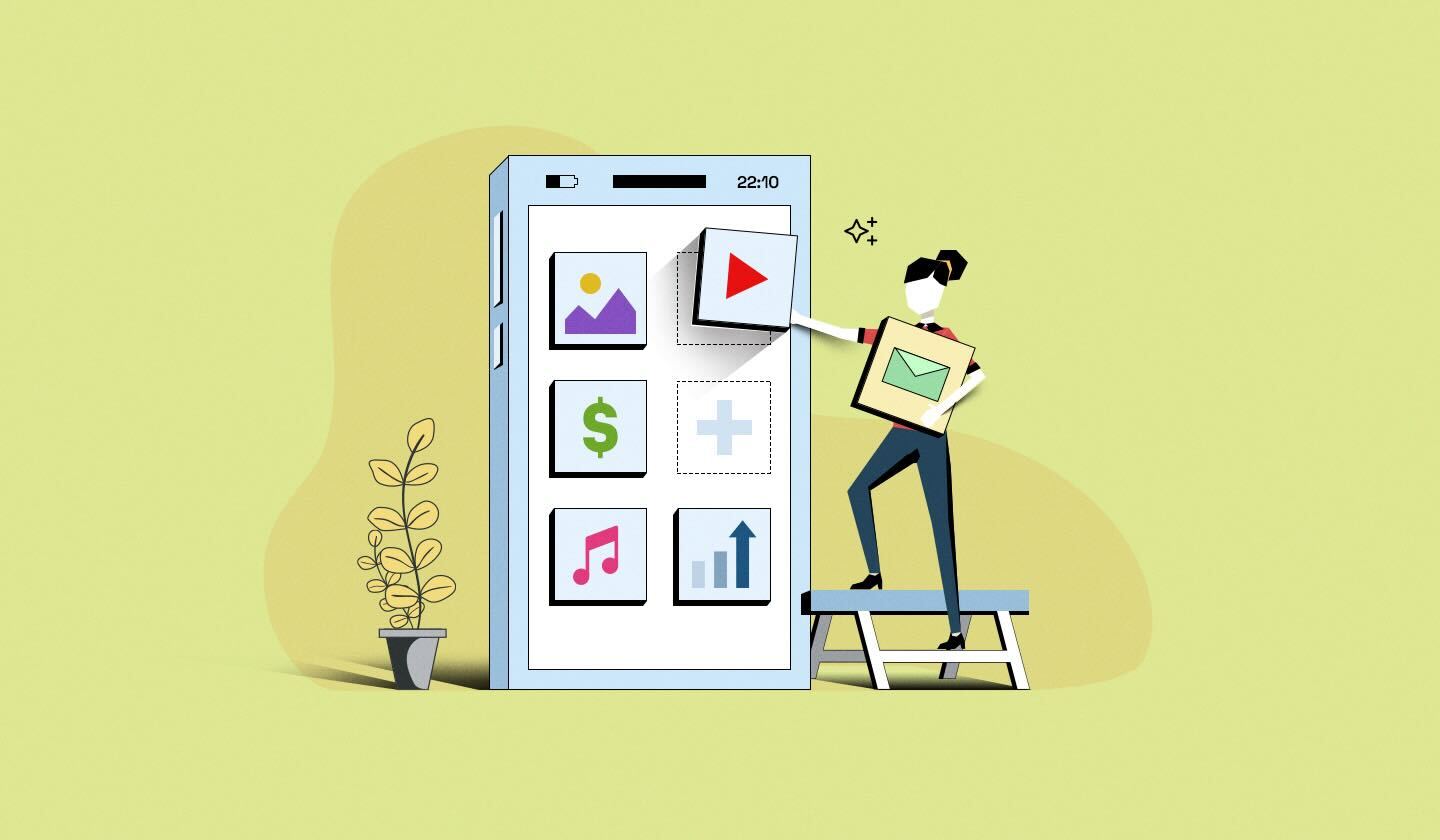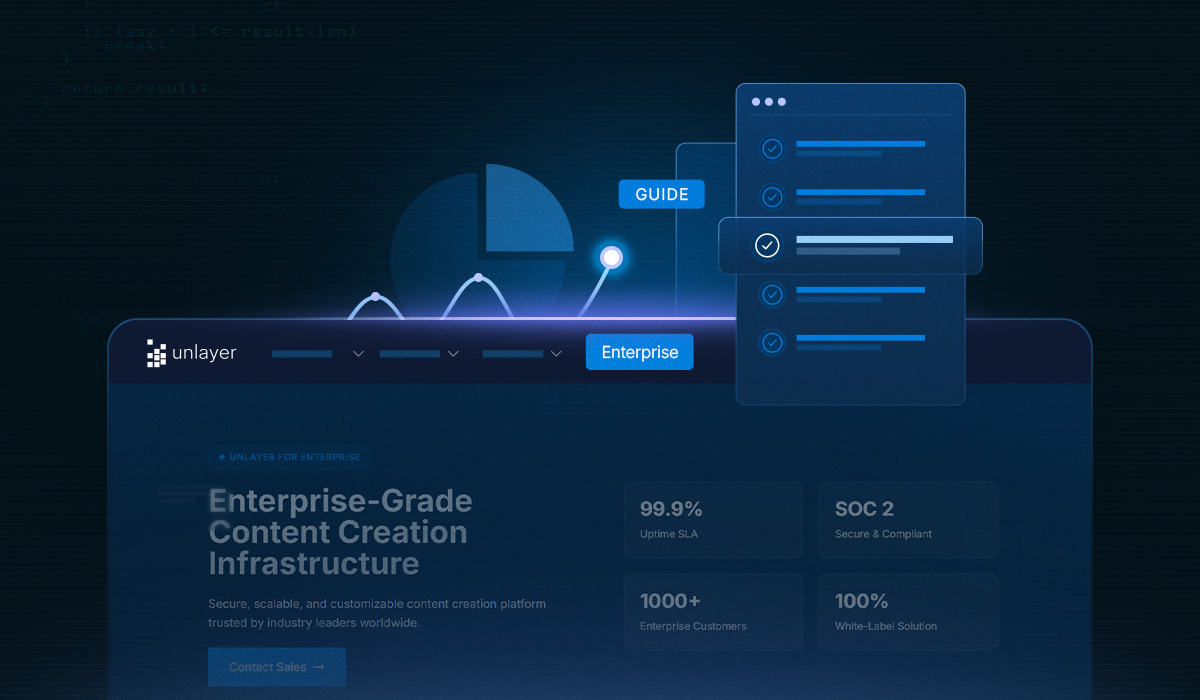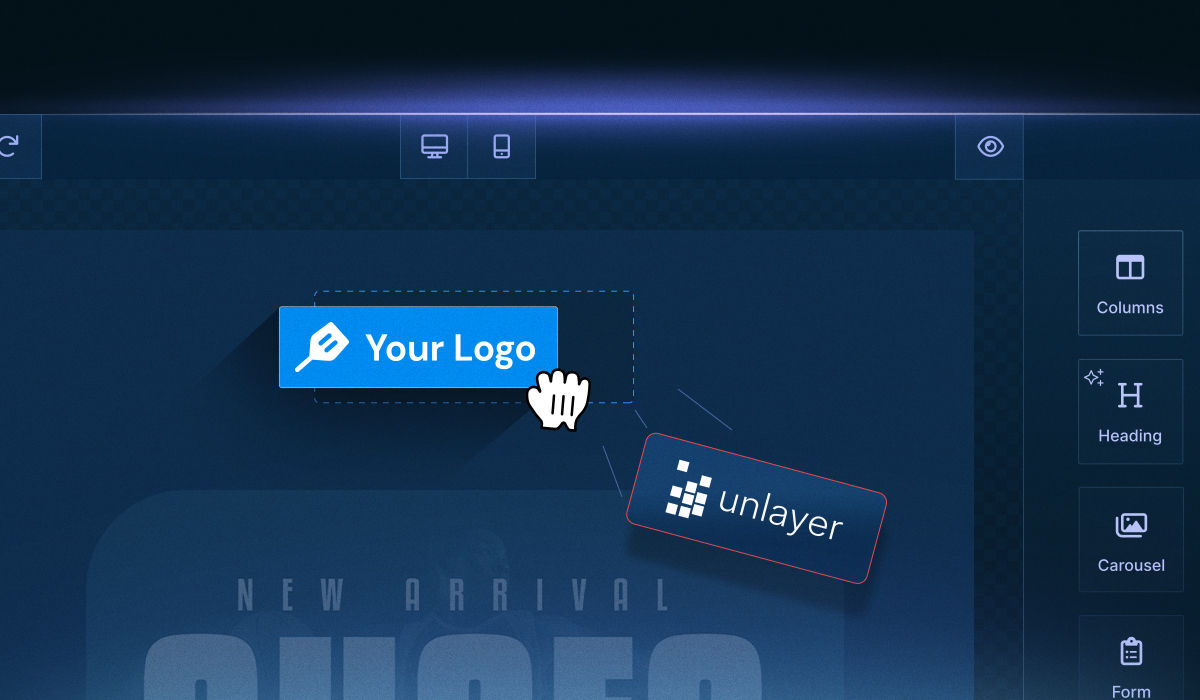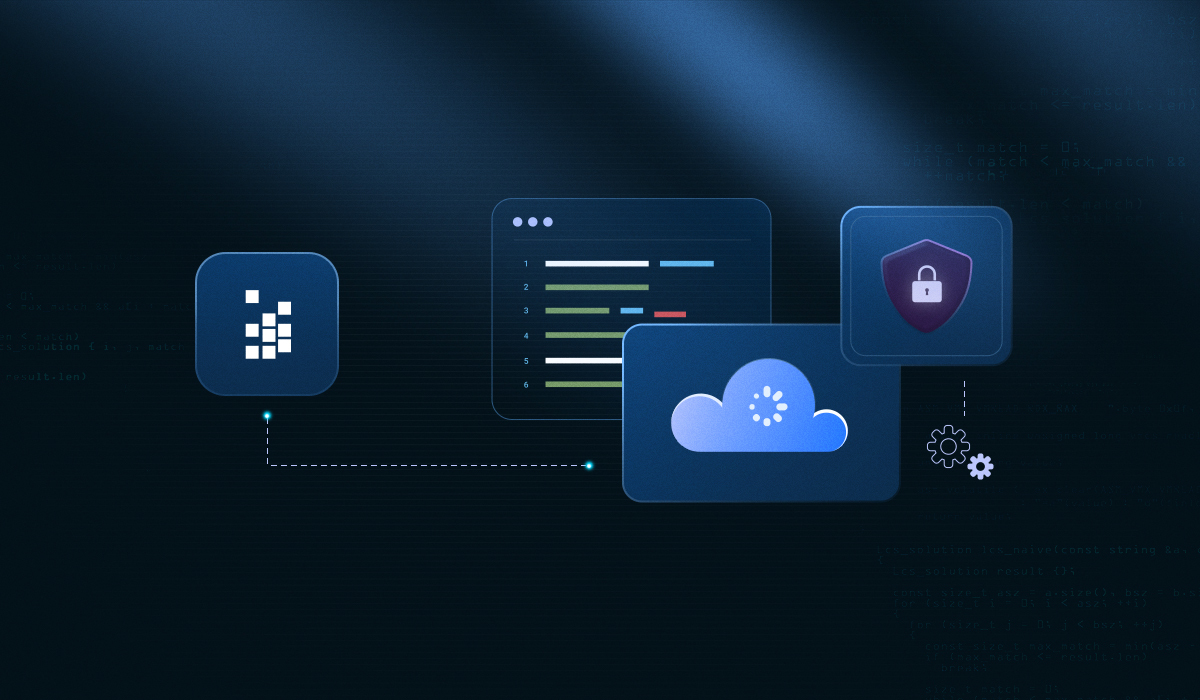Embedding a robust email editor into your Vue app doesn’t have to be complicated and time-consuming. With the right tools and their must-have features, you can give your end-users a seamless drag-and-drop experience without building it all from scratch.
That’s where Unlayer steps in.
We have also written a dedicated guide on the Vue email builder, covering all you need to know before you embed one.
In this post, we’ll walk you through the top Vue email builder features that make it easier for developers to move faster with their tasks while giving non-technical users complete design flexibility.
Whether you’re embedding the no-code solution into a CRM, marketing platform, or internal tool, these capabilities make it easier to offer polished, customizable email creation experiences right inside your host application.
So, let’s get started!
The 12 Core Features That Make Unlayer’s Vue Editor Stand Out
From drag-and-drop design to full customization, here’s a breakdown of the core features that help you build and ship email editors faster with Vue.
1. Drag-and-drop editor
Unlayer’s Vue Email Builder comes with a simple, intuitive drag-and-drop interface that lets your end-users create beautiful emails without writing a single line of code.
From text and images to CTA buttons and dividers, users can easily drag elements into place and build emails visually.
Here’s what it looks like in action.

Why is it important?
This feature dramatically cuts down development time while making the design process faster and more accessible.
Non-technical users, such as marketers, designers, or content creators, can build email marketing campaigns without relying on developers, leading to better collaboration and a smoother workflow.
2. Load, save, export designs
Unlayer’s Vue Email Builder provides built-in methods—loadDesign, saveDesign, and exportHtml—that let you programmatically control the editor’s content. These API methods allow you to fetch design data from your backend and load it directly into the editor.
You can load saved email designs using JSON, save user progress mid-edit, or export clean, production-ready HTML (with embedded design JSON) for sending or storing.
Why is it important?
These methods give developers complete control over the design lifecycle. Whether you’re enabling autosave, offering template reusability, or passing final HTML to an email delivery service, this API access streamlines the process.
It also ensures design consistency and easy data management across apps, sessions, or users.
3. Pre‑built email tools & blocks
With Unlayer, you can access a wide range of pre-built content blocks, including columns, text, buttons, images, social icons, video, dividers, menu, countdown timer, and even a custom HTML widget.
These blocks give users everything they need to create professional-looking emails with minimal effort.
Why is it important?
Instead of building individual components from scratch, you get a ready-to-use toolkit that covers most email design needs. This speeds up development and helps end-users design faster without compromising on quality or email layout flexibility.
Bonus: Reusable content blocks
Need dynamic blocks that users can drag and reuse across templates? Unlayer also supports custom reusable blocks, allowing you to build modular components, like banners, product cards, or disclaimers, that reflect your brand and logic.

4. Templates & design library
Unlayer gives you access to a rich library of over 2,000 responsive, professionally designed email templates—covering everything from newsletters and product launches to event invites and transactional emails.

Why is it important?
Templates provide a head start for users who don’t want to start from scratch. They not only speed up the design process but also ensure consistency in branding, layout, and structure.
This is especially useful for non-designers or teams creating large-scale email marketing campaigns.
5. Advanced customization options
Vue email builder enables deep customization across three main areas—appearance, editor behavior, and content settings—giving you full control over branding, UX, and layout defaults.
Appearance
Configure themes (including light and dark mode), reposition or collapse tool panels, customize loading spinners, and inject your own CSS/JS for advanced styling. You can choose from four built-in themes, modern_light, modern_dark, classic_light, classic_dark, or define your own theme object for full brand alignment.
Editor Behavior
Fine-tune how users interact with the editor using props like:
blankDesign to reset the canvas
autoSelectOnDrop to immediately show tool properties upon placement
confirmOnDelete, undo/redo, preview designs, and responsive controls (e.g., "Do Not Stack on Mobile" or “Hide on Mobile”)
Content Settings
Set default values for body styles (background color, font, content width, preheader), enforce predefined layouts (columns, headers/footers), and limit rows per design, all to maintain consistency and brand cohesion across emails.
Why is it important?
These options let you embed an email editor that looks, feels, and behaves like a native part of your Vue app.
From dark mode preference to enforcing responsive patterns and brand guidelines, you can ensure your editor isn’t just functional, it’s fully aligned with your brand’s needs.
6. Custom tools & extensibility
Unlayer’s Vue Email Builder supports the creation of fully custom tools, letting you go beyond the default blocks and build components tailored to your product or use case.
Whether it’s a QR code generator, personalized content block, or dynamic widget, you can register tools using the customJS property in editorOptions and integrate them seamlessly into your Vue app.

Why is it important?
Custom tools let you serve unique use cases without waiting for product-level changes.
They empower you to build reusable, branded components—like product cards, disclaimers, maps, or promotional banners—that align with your platform’s logic, content sources, or customer segments.
Vue integration
You can register and include custom tools in your Vue setup using two main methods:
Use
unlayer.registerTool()in your custom JS file to define the tool schema, UI, and behaviorInclude the script via the
options.customJSprop and activate the tool through thetoolsconfiguration
Unlayer also supports adding custom properties panels, icons, tool-specific validation, and dynamic default values, making these blocks feel truly native inside the editor.
Helpful resources
Looking to build or troubleshoot custom tools in Unlayer? Start here:
📘 Unlayer Docs – Create a Custom Tool
A detailed, step-by-step guide on how to create, register, and configure your own custom tools within the Unlayer editor.
🧩 Live Example – Simple Custom Tool
Explore a working demo of a basic custom tool in action—perfect for understanding how everything fits together before building your own.
7. Developer-friendly API & Vue component
Unlayer follows an API-first approach, offering a range of events, callbacks, and hooks that allow seamless integration with Vue.js and other modern frameworks.
Through the Vue component, you get full control over the editor’s behavior—from tracking user actions to extending functionality programmatically.
Why is it important?
Whether you want to autosave progress, trigger UI updates, validate designs, or sync changes with your database, Unlayer’s event system fits naturally into Vue’s reactive lifecycle.
The result: a light, flexible integration that gives developers precision control without unnecessary overhead.
Key event capabilities include:
editor:onDesignLoad: Detect when a design is loaded into the editoreditor:onDesignSave: Capture real-time saves and trigger custom logiceditor:onToolClick: Track tool usage (e.g., when a user clicks the image tool)editor:onPreview: Hook into the preview actioneditor:onExport: Capture export behavior and format output as needededitor:onUndo / onRedo: Customize how undo/redo actions are handled
8. Responsive & cross‑client compatibility
Unlayer automatically generates clean, mobile-friendly HTML that’s optimized for several email clients and ESPs—including Gmail, Outlook, Apple Mail, and Yahoo.
All emails designed with the Vue Email Builder are fully responsive by default, ensuring they look great across desktop, mobile, and tablet devices.
Why is it important?
Responsive design is non-negotiable in today’s multi-device world. With Unlayer, you don’t need to manually write media queries or adjust layouts—built-in tools handle the resizing and formatting behind the scenes.
This saves time, eliminates guesswork, and delivers a consistent experience for every recipient.
You can test emails with Unlayer’s built-in preview mode.

9. White‑labeling & localization
Unlayer’s Vue Email Builder is designed to seamlessly blend into your product’s visual identity and global workflows. Through white-labeling and localization features, you can fully customize the editor’s appearance and support multiple languages for international teams.
White‑Labeling:
Use the appearance prop to customize fonts, colors, layout, themes (light/dark), and loading visuals. The Unlayer watermark is completely removed on paid plans, so the editor blends seamlessly into your app’s UI, making it feel like a native part of your product.
You can create and offer watermark-free emails, landing pages, and other editable content directly through your own interface, making it ideal for reselling or productizing your platform.
Localization & multi-language support:
You can configure the editor to operate in different languages using the locale prop. This enables your team and users to interact with the UI in their preferred language, improving usability and accessibility across regions.
Why is it important?
For teams building SaaS tools or internal platforms, white-labeling unlocks the freedom to sell or scale your app without exposing the underlying service. Combined with localization support, you can serve international audiences while keeping your brand front and center.
10. Collaboration & access control
Our Vue email builder supports advanced collaboration features, including role-based access control and real-time editing. Whether you’re managing a small marketing team or a large cross-functional group, you can assign specific roles—like Owner, Admin, Editor, or Contributor—to control who can design, edit, publish, or manage content blocks.
Read More: User Roles & Access Control in Email Builders: What, Why, & How
Additionally, real-time collaboration allows multiple users to work on the same design simultaneously, making edits, adding blocks, or previewing changes without version conflicts or overwriting each other’s work.
Why is it important?
With built-in access control, you can maintain clear boundaries between users while encouraging efficient teamwork.
Designers can focus on layout, marketers can handle content, and admins can lock sensitive blocks or templates—all within a shared space. This streamlines approvals, reduces back-and-forth, and speeds up campaign delivery.
11. Security & enterprise‑grade reliability
Unlayer is built with enterprise-level security and performance in mind. It offers SOC 2 compliance, 99.9% uptime SLA, end-to-end encryption, and identity verification—especially important when sending test emails or handling user data across distributed teams.

For businesses embedding the Vue Email Builder in high-scale, high-security environments—like CRMs, marketing automation platforms, or internal tools—these protections ensure compliance and peace of mind.
Why is it important?
As your product scales, so does the need for trust, data protection, and platform stability. With Unlayer’s enterprise-grade infrastructure, you can confidently deliver a secure, white-labeled experience to your users without sacrificing flexibility or performance.
12. Dynamic content personalization
The Vue email builder by Unlayer supports personalized email experiences by enabling dynamic content blocks that adapt based on user data, behaviors, or custom variables.
Dynamic content allows you to show or hide specific elements in your email, like headlines, product recommendations, or CTAs, based on the viewer’s profile, segment, or activity.
You can use merge tags and conditional statements (like {{if}}, {{else}}, {{endif}}) directly within blocks.
Why is it important?
This feature is a game-changer for email marketers. You can deliver hyper-targeted messages that increase email engagement, conversion, and retention, without cloning the same email multiple times for different segments.
Key capabilities:
Conditional Visibility: Render blocks based on user attributes (e.g., gender, past purchases, geography).
Merge Tags: Inject real-time values like first name, company, or custom fields.
Custom Logic: Combine with personalization rules to show different offers, images, or messages, without touching the backend.
🔗 Explore the Docs: Dynamic Content – Unlayer Documentation
Getting Started: Unlayer Vue Setup
Quick install:
To get started with Unlayer in your Vue project, install the Vue Email Editor component via npm:

Or via yarn:

Basic usage:
Once installed, you can import and use the <EmailEditor /> component in your Vue templates. Here’s a minimal example:

Helpful resources:
Want to go deeper or need help implementing the editor in your Vue app? These resources will guide you:
📘 Official Docs – Vue Email Editor Component
Step-by-step instructions for installing, configuring, and using Unlayer’s Vue component.
🛠️ Blog – How to Embed a Vue Email Builder in Your App
A practical walkthrough on integrating Unlayer’s email editor into a Vue-based application, complete with examples and best practices.
Final Thoughts
Unlayer’s Vue Email Builder is more than just a drag-and-drop editor—it's a fully customizable, white-label-ready solution designed for fast-moving development teams.
With powerful features like real-time collaboration, responsive design, role-based access, and enterprise-grade security, it seamlessly integrates into Vue apps of all sizes and scales.
Ready to give it a spin? Start building with Unlayer’s Vue integration today.
Frequently Asked Questions (FAQs) About Vue Email Builder Features
1. How do I install and initialize the Unlayer Vue component?
Use npm install vue-email-editor and import the component. Then include it in your template, passing props like projectId, locale, appearance, and bind events like load and ready.
Example boilerplate is provided in both npm and the official docs.
2. The editor runs slowly—what can I do?
Long load times often stem from font loading or API requests. One workaround is passing version: "latest" in the options, or debugging network bottlenecks.
3. Are customization & extensibility key for developers?
Yes—top tools like Unlayer provide deep customization through custom tools, themes, localization, and advanced APIs. Developers want editors they can tailor with plugins, custom blocks, and CSS injections.
4. Is seamless integration with Vue a major factor?
Yes. Vue-specific components with event hooks (e.g., load, save, export) and lightweight SDKs allow editors to fit neatly into Vue’s lifecycle. Strong documentation and active GitHub communities are also essential.
5. How critical is documentation and community support?
Community and official docs are vital. Developers rely on:
Official guides and code examples
Active GitHub issue resolution
Q&A from StackOverflow/Reddit
These resources help troubleshoot common problems like version mismatches or timezone issues.
6. What about reusable content blocks for brand consistency?
Modular, reusable blocks (e.g., headers, footers, and CTAs) are essential for maintaining branding and speeding up content creation. Editors that support custom, reusable components receive high praise, and Unlayer is one of them 😉.
7. Does clean HTML output matter for ESP compatibility?
Definitely, developers expect generated HTML to work out of the box with ESPs like Mailchimp, Klaviyo, and SendGrid. Low-quality, messy code can lead to rendering glitches or deliverability problems.




